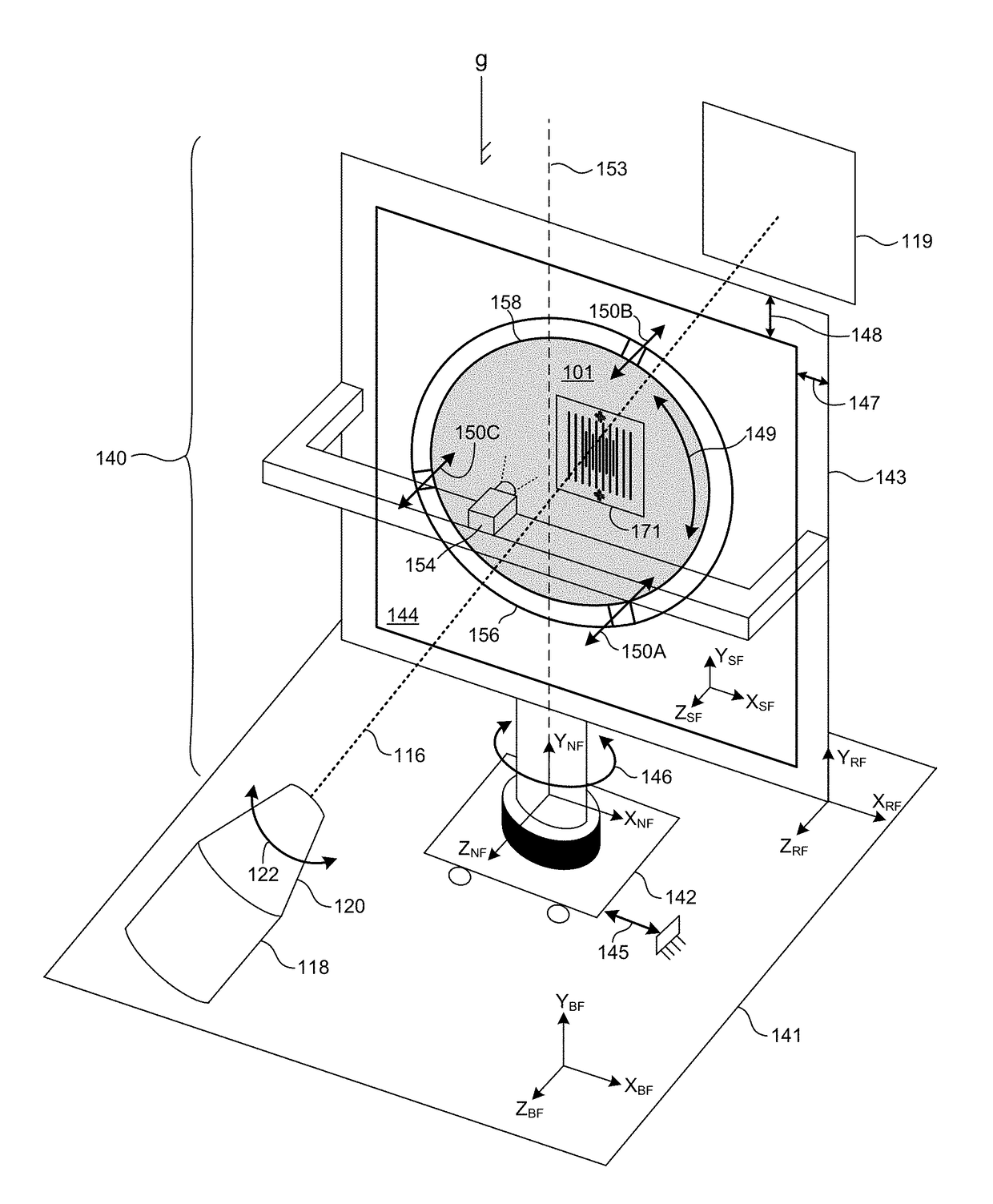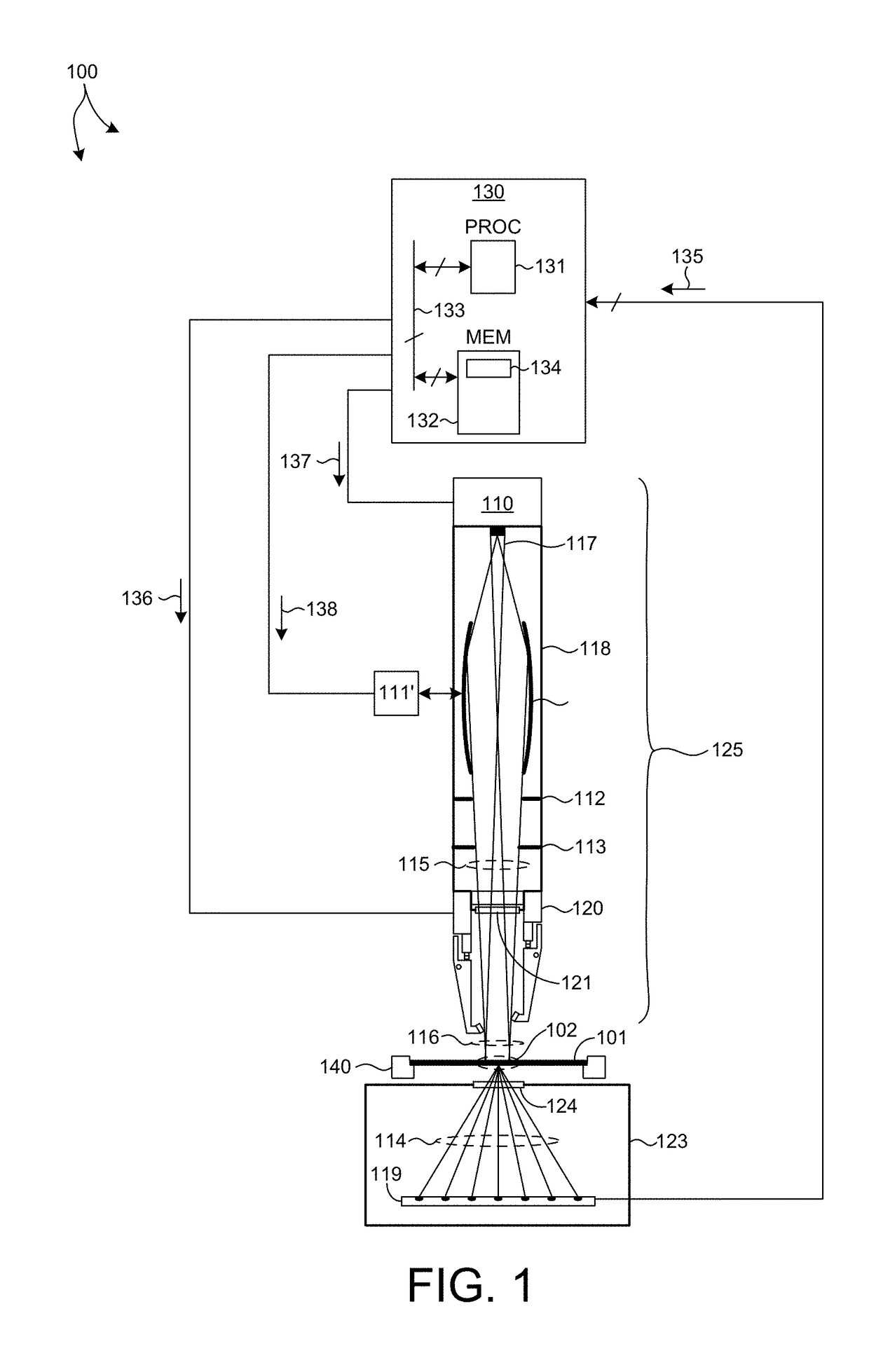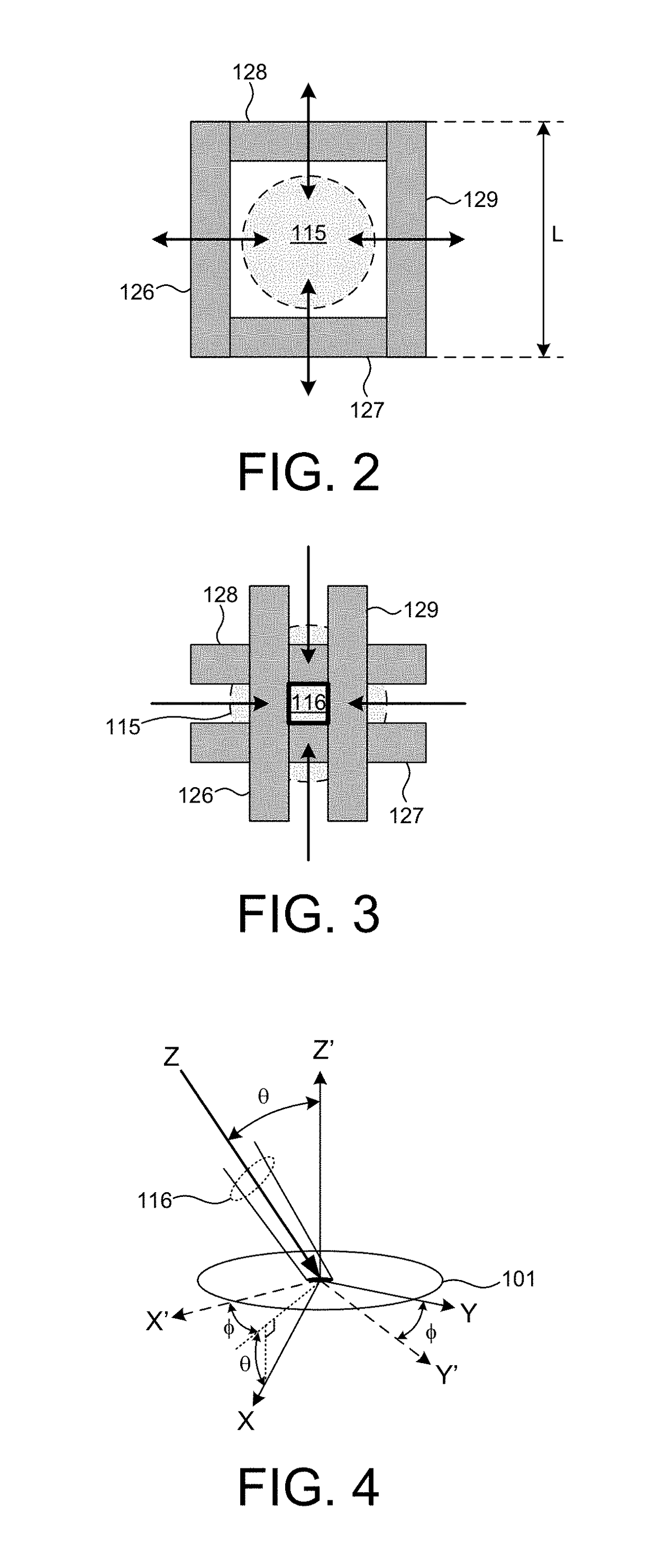Methods And Systems For Characterization Of An X-Ray Beam With High Spatial Resolution
a technology of spatial resolution and characterization method, applied in the field of x-ray metrology system and methods, can solve the problems of difficult optical radiation penetration to the bottom layer, difficult characterization, and increased difficulty in characterization, and achieve the effect of easy determination
- Summary
- Abstract
- Description
- Claims
- Application Information
AI Technical Summary
Benefits of technology
Problems solved by technology
Method used
Image
Examples
Embodiment Construction
[0056]Reference will now be made in detail to background examples and some embodiments of the invention, examples of which are illustrated in the accompanying drawings.
[0057]Methods and systems for positioning a specimen and characterizing an x-ray beam incident onto the specimen in a Transmission, Small-Angle X-ray Scatterometry (T-SAXS) metrology system are described herein. Practical T-SAXS measurements in a semiconductor manufacturing environment require measurements over a large range of angles of incidence and azimuth with respect to the surface of a specimen (e.g., semiconductor wafer) with a small beam spot size (e.g., less than 50 micrometers across the effective illumination spot). Accurate positioning of the wafer and characterization of the beam size and shape are required to achieve small measurement box size. In addition, calibrations that accurately locate the illumination beam on the desired target area on the surface of a semiconductor wafer over the full range of i...
PUM
 Login to View More
Login to View More Abstract
Description
Claims
Application Information
 Login to View More
Login to View More - R&D
- Intellectual Property
- Life Sciences
- Materials
- Tech Scout
- Unparalleled Data Quality
- Higher Quality Content
- 60% Fewer Hallucinations
Browse by: Latest US Patents, China's latest patents, Technical Efficacy Thesaurus, Application Domain, Technology Topic, Popular Technical Reports.
© 2025 PatSnap. All rights reserved.Legal|Privacy policy|Modern Slavery Act Transparency Statement|Sitemap|About US| Contact US: help@patsnap.com



